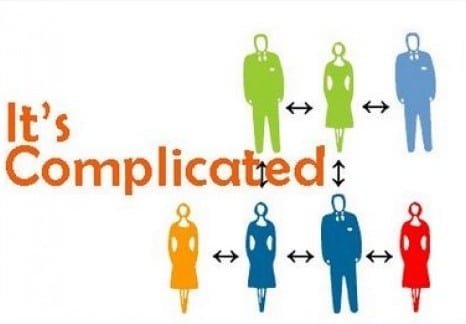In recent years, interest in non-monogamy has increased dramatically, and mainstream media have displayed a somewhat more respectful attitude toward alternative relationship styles – from Big Love to Dr. Drew Pinsky’s recent acknowledgement on The View that open relationships can work for some people. In addition, the number of books that question monogamy seems to have increased, and one, Christopher Ryan’s Sex at Dawn, was a New York Times bestseller. As with the rapid acceptance of “same sex” marriage, this reflects a major shift in the culture, a level of openness to sexual and relational alternatives not seen since the late 1960s and 1970s, and time of rapid change and experimentation. Despite this new openness, monogamy remains the default mode for most people, and those who have open relationships are often mocked, condemned, and even treated as strange or “sick.”
Monogamy is one relationship-style among many, and there are many different forms of monogamy. Not long ago, it was expected that couples would marry as virgins and be sexually exclusive for life. Things were very different then; life spans were shorter; divorce was not an option; and gender-based double standards were more powerful than they are today. By the 1960s, this form of monogamy was largely replaced by serial monogamy (having many partners, but only one at a time,) something that is still very common. But even people who identify themselves as monogamous may have different understandings of what the word means. For some, looking at another, fantasizing, and viewing porn are forms of cheating. For others, it’s only cheating if there’s genital intercourse.
Monogamy is a valid relationship choice, whether it’s permanent or whether people move in and out of being more open. Of course, many couples are happily monogamous, but unconscious monogamy often creates problems. If your relationship style is based on what’s expected or what society tells you and you haven’t thought it through, there’s a good chance you won’t have clear understandings and agreements. If one person thinks viewing porn is cheating and the other just sees it as a way of letting off steam, there’s likely to be conflict. If one partner wants to acknowledge attractions for other people (without expressing a need to act on them) and the other feels threatened by those attractions, jealousy and insecurity are likely to arise. For monogamy to work well, it has to be discussed, defined, and agreed upon, so that it’s a choice not a reflex.
If you choose to be monogamous, you need to have clear agreements about what it means to you and how it will be expressed. This can change over time, so it’s important to have an ongoing dialogue. The same goes for non-monogamous relationships. By now there’s plenty of evidence that humans, of all genders, evolved to form pair bonds and also to seek variety in their sexual partners. It’s safe to say that some form of pair bonding is a natural expression of human biology, but monogamy as it’s currently practiced and idealized in our culture is hardly natural. There’s no one size fits all when it comes to relationship styles or measuring relationship success. It’s up to you to choose what works for you.
Read more from Mark A. Michaels and Patricia Johnson at www.MichaelsandJohnson.com and via their books, Partners in Passion, Great Sex Made Simple, Tantra for Erotic Empowerment, and The Essence of Tantric Sexuality.







This is a really great article, thank you so much for posting it! It’s something that polygamous and polyamorous couples face a lot, being called unnatural or sick, and it’s a damn shame considering very few animals actually mate for life. Again, loved this article, it was a really great read!
Thanks! So glad you enjoyed this blog post. Many animals that mate for life still have sex with others when the opportunity presents itself ; )
These are incredible tips! Often, monogamous relationships come with the assumption that both parties expect the same thing. One partner might be shocked to find that the other partner thinks porn is cheating – or is offended simply by their partner talking to other people (even casually at a bar). Even in open or poly relationships – everyone has a different expectation of what’s acceptable. Talking about it ahead of time with totally open and honest communication can help a LOT for the future, and preventing hurt feelings.
This blog is very informative for me and also helpful to know about sex toys.